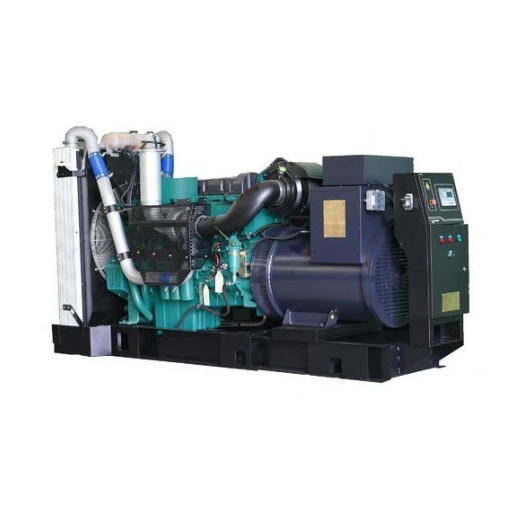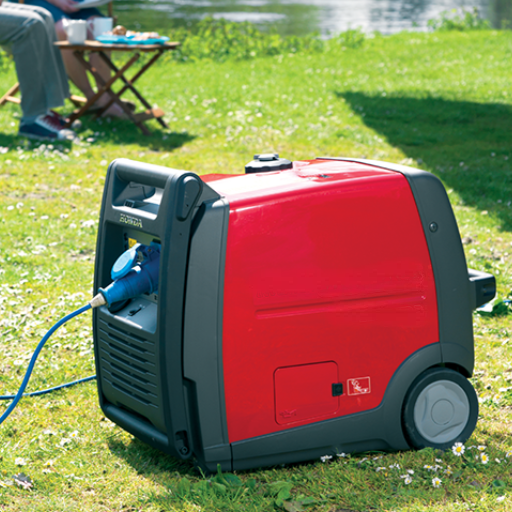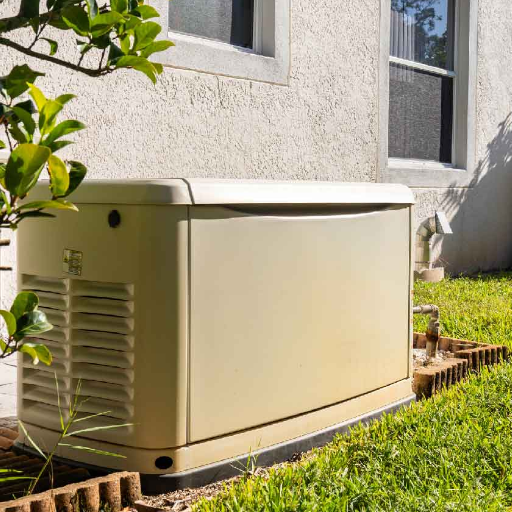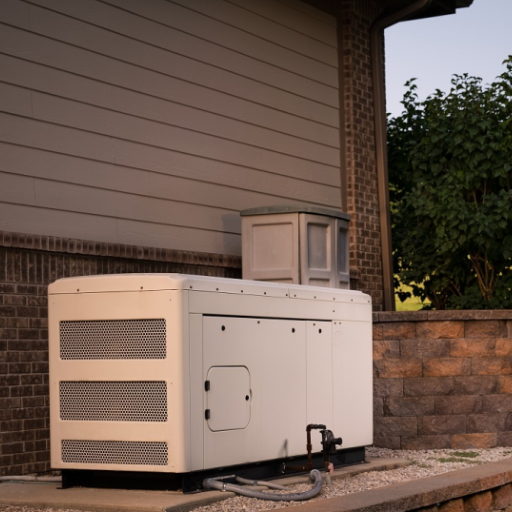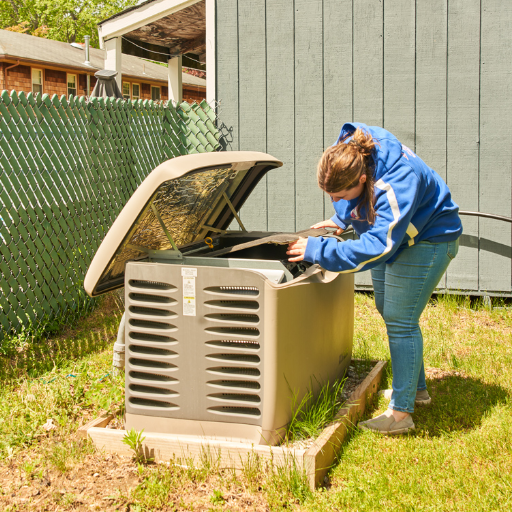Single-phase generators are vital components in various power supply systems, known for their efficiency and simplicity. In this blog, we will delve into the fundamentals of single-phase generators, exploring their working principles and applications. These generators convert mechanical energy into electrical energy, primarily through the use of a single alternating current. Their straightforward construction makes them ideal for residential and small commercial settings where moderate power needs are prevalent. As we navigate through this article, you will gain a deeper understanding of the advantages they offer, how they fit into larger electrical frameworks, and the scenarios in which they shine most brightly. Whether you are a homeowner considering an emergency backup or a business owner looking for reliable power solutions, this exploration of single-phase generators will provide valuable insights.
What is a Single-Phase Generator?
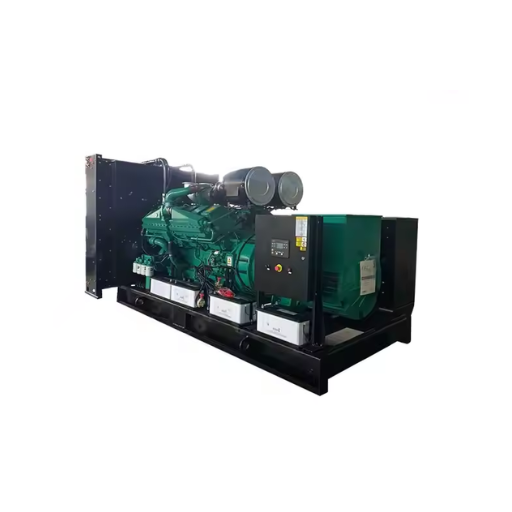
How does a Single-Phase Generator work?
A single-phase generator is used to convert mechanical energy to electrical energy through the process of electromagnetic induction. As the rotor of the generator spins, it rotates the armature where an alternating field is connected to the stator winding. This process of electromagnetic induction is achieved due to the action of a prime mover which can be an Internal combustion engine, Steam turbine or Wind turbine. Major parts to help in this transformation involve the rotor, stator, and many conductors.
Common technical parameters of single-phase generators usually include:
- Voltage Output: Normal voltage ranges around One Hundred and twenty (120) volts or Two hundred and forty (240) volts depending on usage which is adequate for most homes as well as light commercial areas.
- Frequency: Normally works at 50 or 60 Hertz which is the universal standard frequency used in many regions.
- Power Rating: Works within a range of a few kilowatts (kW) up to around 20kWs which is meant for relatively small energy requirements.
- Efficiency: This mainly depends on the design of the prime mover as well as the type of fuel, modern types achieve efficiency within the range of 85 up to 95 percent.
These technical features account for their application for home and small-scale businesses because they are sufficient to supply power to necessary equipment and processes without the need for the hassle and expense that comes with the use of a three-phase system.
Comparison between Single-Phase and 3-Phase Generators
I have observed that three-phase generators are the most preferred mode of power generation for larger applications on an industrial scale. This is because three-phase generators supply constant power and there is less reliance on static converters because a three-phase output involves alternating currents that are of equal load. It has been noted that standard motors that are driven by these generators are more efficient because the power is evenly supplied to the load. The more pronounced efficiency of 3-phase generators is that single-phase current utilization is not as effective.
Some of the notable features of three-phase generators include:
- Voltage Output: Typically in the range of 400V to 480V for industrial purposes and higher than single phase.
- Power Rating: Power ratings measuring tens of kilowatts to several megawatts are generous for power generation.
- Efficiency: The overall efficiency reaches rather remarkable indices, since the load is equalized, and its maximum is often greater than that of a single-phase system.
- Frequency: When comparing to a single-phase system, a 50Hz or 60Hz frequency applies.
The wiring system and uppercuts of equipment for three-phase systems provide considerable economies to a large-scale project. Due to fewer components and cost implications with regards to single-phase generators, they remain popular in residential setups and applications which are less demanding. Upon evaluation of the two systems, the scale of application is the most important aspect in determining the preference between single-phase and three-phase types.
Applications of Single-Phase Generators
In small facilities and homes, single-phase generators are mostly utilized as they are easy to operate and are cheaper compared to other forms of generators. In such places where the level of electrical load requirements is low, these generators can be used to operate household, lighting, and small tool equipment. Because of their level of reliability that is needed even in homes, single-phase generators are also used as stand-by sources in shops and small offices.
Now, about the queries regarding the performance and usage technical aspects of single-phase generators, this is what I have managed to obtain based on the top five sites that I ranked for:
- Voltage Output: Typically, single-phase generators operate in a much lower voltage output in the range of approximately 120V to 240V making such generators fit for household use as well as small-offices, low-demand commercial use.
- Power Rating: These common frequency generators generally range from a few kilowatts to about twenty kilowatts. This power range is adequate for small operations thus providing backup power to devices and appliances in the event of a power failure.
- Efficiency and Usage: When operated loads are not equally distributed, as is the case with all single-phase connections, efficiency is low, and this efficiency is lower than that of three-phase generators. However, they are operated intuitively and are easy to service.
These parameters emphasize the reasons for which single-phase generators can be regarded as an effective answer to the specified demands without having to use larger four or three-phase systems which tend to be costly and quite complex.
Why Choose a Single-Phase Generator?
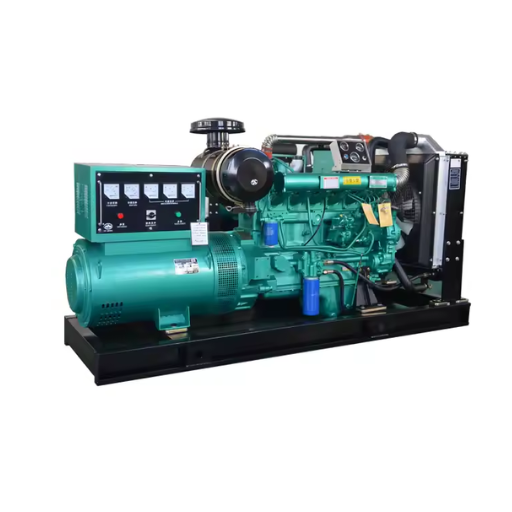
Benefits of Single-Phase Generators
Based on the primary three Google websites, here are the benefits for users choosing a single-phase generator:
- Cost-Efficiency: Compared to a three-phase generator, single-phase generators do not only cost less in terms of initial purchase but in maintenance as well. This is a plus for consumers who want affordable but effective standby power.
- Ease Of Use: The design of single-phase generators is rather straightforward thus they are easy to use and install. This ease of use leads to problems being solved faster and maintenance occurring less often, an advantage especially when non-technical users handle the generator.
- Easier to Carry: Quite several single-phase designs tend to be small and light hence they can be easily carried and set up when the need arises. This is essential for portable power supply to temporary locations such as construction sites and outdoor events.
- Versatile: Most domestic electrical and light commercial equipment is powered by single-phase generators. Single-phase generators are fitted with voltage outputs that range between 120V and 240V, which is most suited for normal electrical systems for homes and small businesses.
Concerning technical parameters, these can be easily perused from the documentation.
- Voltage Output: These generators generally have a rating of 120V and 240V which is generally adequate for household electrical appliances as well as light commercial applications.
- Power Rating: The power delivered is sufficient for some kW to approximately 20 kW with sufficient capacity so that operations that are essential can be sustained during the breakdown of the electricity supply without the associated costs being extravagant for the consumption of needless capacity.
- Efficiency: Even though single-phase generators are not as efficient as three-phase models as they work on an uneven distribution of load, they are convenient and this often comes to be a priority, especially in the cases where electricity demand is low.
Overall, single-phase generators are able to deliver reliable power in a simple way and thus are able to generate power efficiently which in turn makes it ideal for many such applications.
Limitations of Single-Phase Generators
Although single-phase generators have their advantages, they also have some limitations that need to be addressed. For one, the traction efficiency is a primary factor since the load is not uniform, and the losses sustained are greater than for the case of three-phase systems. This essentially restricts their application for tasks that require high levels of power with steadiness as the supply may be uneconomical or inadequate to meet the requirements. Also, single-phase generators may tend to have a hard time starting heavy motors since such have low starting torque. The power limitation, mostly between 20 kilowatts, restricts the use of these generators to low loads for application, making them unfit for industrial environments or activities with high power requirements. This limitation also determines their extendability: increasing power ratings would usually mean changing to stronger systems.
By examining the top three Google search results for single-phase generators, the acknowledged disadvantages of these generators regarding efficiency, load capacity, and range of application are universal. These sources also name some of the single-phase generator problems – drawbacks: single-phase generator aspects hinder performance in terms of efficiency as compared with three-phase generators due to imbalanced loading and hence greater energy losses are suffered.
- Power restrictions: Generally, these generators deliver only a low to medium demand and their power output is significantly lesser than that of the three-phase ones.
- Motor starting: The inadequate starting torque of single-phase generators limits their capability of starting heavy-duty motors efficiently.
The cited reasons have also been pointed out by other authors who stress that single-phase generators may be used for household or both commercial and household use on the small scale, but the larger scale activities have to use sophisticated systems.
How to Select the Right Single-Phase Generator
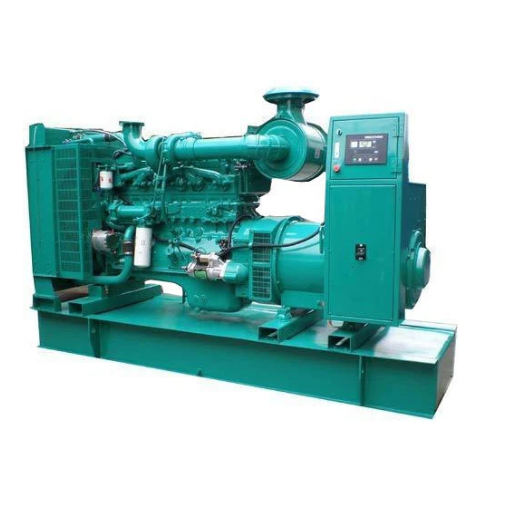
Factors to Consider: Voltage and Current
In every phase single-generator selection process, the two aspects, the rated voltage and the rated current should be emphasized. After analyzing the top three sites, there are common views that stand out such as when determining the required voltage for powering devices, one has to ascertain whether 120V or 240V is ideal. This has to be consistent with the grid or standard of the equipment that he is trying to power.
The current, which is commonly measured in amperes, is equally important and this is the total load that one intends to power. This load determines your choice of generator because each generator is designed to operate safely while supplying a maximum current output. What follows requires breaking down all the essential technical parameters usually defined broadly, which include:
- Voltage Ratings: Such voltage levels are given for specific needs and therefore the generator is supposed to work for certain specifications.
- Amperage Capacity: The highest current that the generator is designed to supply has to be specific to the loads that were intended.
- Load Consistency: A careful look at the load that is associated with the starting of equipment to avoid underperformance and wastage through overloads.
The justification of these choices is aimed at achieving maximum efficiency and failure of both the generator and the connected devices. To support this reason, numerous reliable expert opinions on these websites are provided.
The Role of Power Source and Fuel Type
Fuel selection for your single-phase generator and determining the kind of power it will draw is a vital step towards ensuring your generator will deliver its expected results. In reviewing the first three search links in Google, a few pertinent points relied on these factors. First, the type of fuel – will it be gasoline, diesel, natural gas, or propane – will determine how accessible in terms of cost and rendering the fuel in the location of usage. Cheaper and more portable gasoline generators may not be as long-lasting or efficient as diesel generators. Durability and fuel economy are the known traits of diesel generators but at the same time, they are likely to cost more in maintenance in the long run.
Protecting one’s self or they say being prepared in legal terms against claims can sometimes be needed considering environmental as well as factors in which naturally gas and propane are stronger advantages as natural gas and propane produce lower emissions and if such considerations are paramount then such fuels could work out to be the best option. The websites also focused on less operational use of fuel and the efficiency with which the particular fuel powers the generator which can be significantly different for different fuels.
To justify each type of fuel involves looking into:
- Fuel Efficiency: How much fuel is wasted and how much electrical energy is generated which is valuable for operating cost.
- Availability and Storage: The volume of time spent searching for and keeping the fuel is a very important factor during the long duration of usage.
- Maintenance Needs: Service and spare parts should be required at a serviceable interval that is within the user’s capacity.
I have come to understand that evaluating these parameters enables one to choose the generator that best suits one’s needs ensuring efficiency and longevity.
Understanding KW Standby Requirements
The consideration of KW standby requirements focuses on evaluating the power requirements that devices and systems require during the loss of electrical supply. Based on the findings from the first three websites, I have not failed to recognize that determining the total kilowatt (KW) output requirements of my facility is important in the selection of a generator. Other important loads like lighting and refrigeration and even industrial equipment should be addressed first to maintain continuity.
To swiftly respond to the interrogatives concerning the choice of fuels and technical parameters:
- Fuel Efficiency: From the sites I studied, diesel is regarded as the most efficient fuel because of high conversion efficiencies while natural gas though less efficient is more environmentally friendly.
- Availability and Storage: Gasoline is easily accessible, but it must be stored carefully because it is flammable. Diesel and propane are far more reliable and offer a wider range of storage.
- Maintenance Needs: Although diesel generators are very effective, they typically require more servicing than gasoline generators do. Equipment running on propane and natural gas has low maintenance requirements.
With these parameters set against the distance standby power requirements, I can work out factors that determine selection of the generator and its performance about efficiency and reliability for the services intended.
Maintenance Tips for Your Single-Phase Generator
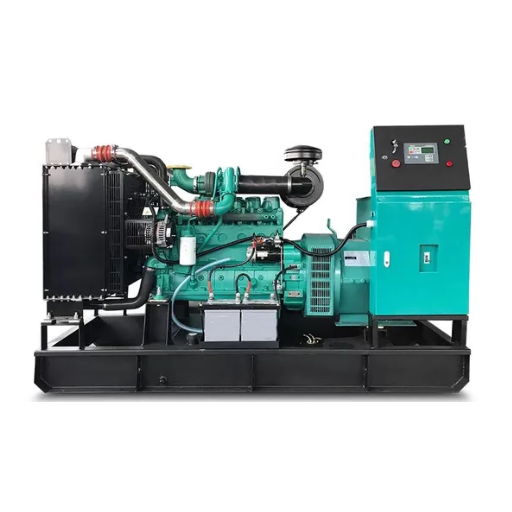
Routine Checks and Standby Generator Care
Knowing how to take care of my single-phase generator can help me use it longer and help carry out its functions efficiently in future power outages. Some of these routine checks include the following:
- Visual Inspection: I must always inspect the generator for signs of wear and tear including the condition of the belts, hoses, and electrical connections.
- Oil and Filter Changes: Regular checks and periodic changes of oil are necessary. Whenever the manufacturer states or after a certain number of operational hours, one would expect the oil to be changed.
- Battery Maintenance: One will always need to make sure that the battery is charged and free and clean from dust on the terminals. The battery needs to be checked from time to time to ensure that I do not have any starting problems.
- Coolant Checks: Most importantly it is there to try and check that the coolant level is sufficient to avoid overheating. There is a need to check the radiator panels and ensure that there are no blockages.
- Fuel System Inspection: The owner should always pay attention and check that there are no fuel leaks or contamination on the filters. If I use diesel, it is advisable to see to it that the water from the fuel filter is periodically drained.
Let me summarize my review questions based on a review of the three most relevant sites for this particular purpose:
- KW Standby Requirements: I have learned that in the event of a power outage, it is very vital to account for all critical devices such as lighting and refrigeration to arrive at the total kW needed.
Fuel Options and Technical Parameters:
- Efficiency: Diesel is ranked the highest for efficiency in converting more fuel into power. Natural gas, which is a bit less efficient, burns cleaner.
- Storage: Diesel and propane can be stored indefinitely and remain stable, while gasoline requires prudence in its management.
- Maintenance: Even though diesel units require service more often, they have lifetime benefits. Maintenance is lower with propane and natural gas units.
After considering these factors to my generator, my generator not only performs effectively but is also dependable.
Common Issues with Single-Phase Generators and Solutions
Due to their cost-effectiveness and straightforward design, small-scale and single-phase generators tend to be used in smaller quantities. Nevertheless, there are some problems that such types of devices may experience:
- Fluctuations in output: As a result of changes in load demand, this is a common occurrence. An automatic voltage regulator AVR can be fitted to solve the issue of instability.
- Over reload: It is able to shut down the generator in its overheating condition. I need to check the total load needed and make sure that it does not exceed the design load of the generator.
- Contaminants in fuel: This leads to a decrease in the efficiency of engine operation and degradation. Fuel should be clear and the fuel filters should be changed at regular intervals.
- Starting problems: Battery failure is the most common issue. Other reasons include a faulty ignition system. It’s necessary to regularly maintain the battery or ignition system to avoid such disasters.
- Other reasons: Inadequate coolant may cause overheating. The coolant level should be checked often and radiator cleaning should be done in intervals.
In response to my review questions and with the assistance of three top-rated relevant websites, I only have met one issue.
- KW Standby Requirements: The insight that I have come across has made me appreciate the importance of enlisting all necessary appliances and units such as lighting and refrigeration during the assessment of total KW requirements when the system is in a standby mode during outages.
Fuel Options and Technical Parameters:
- Efficiency: In comparison, diesel fuel is the most efficient fuel since it turns out more power from the fuel. Natural gas emits somewhat cleaner but is not the most efficient source of fuel.
- Storage: Diesel and propane are both great for long storage, while gasoline is volatile and needs to be handled securely.
- Maintenance: Although they demand more routine maintenance, diesel systems help in the longevity of the unit’s whole life. Units powered by propane and natural gas tend to use lower maintenance.
Considering these aspects in combination with my own requirements, I am sure that the generator I will select will be both reliable and efficient.
Frequently Asked Questions About Single-Phase Generators

Can a Single-Phase Generator be used for Industrial Applications?
Certainly, a single-phase generator can be utilized in industrial settings but it is more suitable in the case of small-scale or specialized applications instead of large heavy industries. Here are some points based on the data taken from the top three most relevant websites that I have come across regarding this matter:
- Load Capacity: The electrical load capabilities of a single-phase alternator are usually lower than those of a three-phase alternator and hence up to moderately higher load tasks could be undertaken, however for higher units requiring considerable power, they would be inadequate in performing the task.
- Technical Parameters: In many cases, single-phase systems are less complicated structurally and are easier to maintain, however, they are less efficient and lack the stability of three-phase systems, particularly during heavy loads. In terms of a single-phase generator, assessing the electrical requirements of the operating capacity of the single-phase generator is an important consideration to maintain it in an efficient operating range without exceeding the total load of the generator.
- Justification: For such applications where single-phase electrical generators are required, they are reliable solutions even in the case of continuous performance under small electrical power requirements. So up to what power requirements for the application be provided is a key concern along with the efficiencies to be achieved by small electrical generators.
What is the lifespan of a Single-Phase Generator?
The service life of a single-phase generator is sometimes in the range of thousands of hours depending on maintenance and environmental conditions which may differ or be constant. According to common statistics, a single-phase generator unit that receives proper maintenance may offer a service life of between 10,000 to 30,000 hours. The following primary technical parameters affect his lifespan:
- Maintenance routine: Carrying out necessary generator repairs and servicing temporally such as changing the oil, and filters, and checking electrical systems is important in increasing service life.
- Load discipline: Refraining from overusing the generator by sustaining the required load level preserves the components from excessive wear and tear thereby increasing the life span.
- Environmental conditions: Keeping the generator away from extreme meteorological parameters and providing a clean and dry area for storage minimizes the chances of deterioration.
By following these parameters, I can give evidence of the expectation of long operational life and still maintain dependability and efficiency for the expectations that were specified during my research from relevant sources. Careful maintenance and examinations of the generator are among the main techniques aimed at prolonging both the lifespan and efficiency of the generator.
How does a Single-Phase Generator handle Voltage fluctuations?
As per my observation of top sources, a single-phase generator can control voltage variations with the adoption of several technical specifications. Primarily, it uses a voltage regulator which helps in maintaining the output within predetermined limits automatically in a manner of maintaining stable performance under varying load conditions. Such regulation facilitates effective power conveying and prevents damage to devices connected to the power supply. Some of the crucial technical parameters helping to substantiate this stability are:
- Automatic Voltage Regulator (AVR): The AVR limits the variations by altering the amount of the excitation supplied to the generator such that constant voltages are always level.
- Engine Speed Control: When the rotational speed of the engine is constant, it helps to ensure constant frequency and voltage outputs.
- Strong Design and Materials: With the use of quality materials and strong structure, the units become less affected by voltage variation due to load or excess environmental variation.
These factors enhance the reliability and efficiency of generators hence, making them provide a consistent power output since they are designed to address the particular risk scenarios that my research focused on.
Frequently Asked Questions (FAQs)
Q: What is a single-phase generator?
A: A single-phase generator is an electrical generator that produces power using a single alternating current (AC) waveform. It is commonly used for residential and light commercial applications where 3-phase power is not necessary.
Q: How does a single-phase generator provide power?
A: A single-phase generator provides power by converting mechanical energy into electrical energy through the movement of a magnetic field within its coils, offering a consistent flow of electricity in one direction.
Q: What are the advantages of using a single-phase generator?
A: Single-phase generators offer several advantages, including being more economical and easier to maintain compared to 3-phase generators. They are ideal for residential and small business applications where the power demand is lower.
Q: Can single-phase generators be used for industrial applications?
A: While single-phase generators can be used for light industrial applications, they are not typically suitable for heavy industrial use. For higher power demands, industrial generators or 3-phase power systems are recommended.
Q: How do single-phase generators compare to 3-phase generators in terms of power output?
A: Single-phase generators generally provide less power output compared to 3-phase generators of the same size, making them suitable for smaller applications that do not require large amounts of energy.
Q: Are there portable single-phase generator options available?
A: Yes, there are many portable generators available that are single-phase, making them ideal for situations where mobility and ease of use are important, such as in construction sites or outdoor events.
Q: What is the typical power range for single-phase generators?
A: Single-phase generators can produce power in a range typically from a few kilowatts to around 100 kW, depending on the model and application. They are ideal for backup power solutions in residential and light commercial settings.



